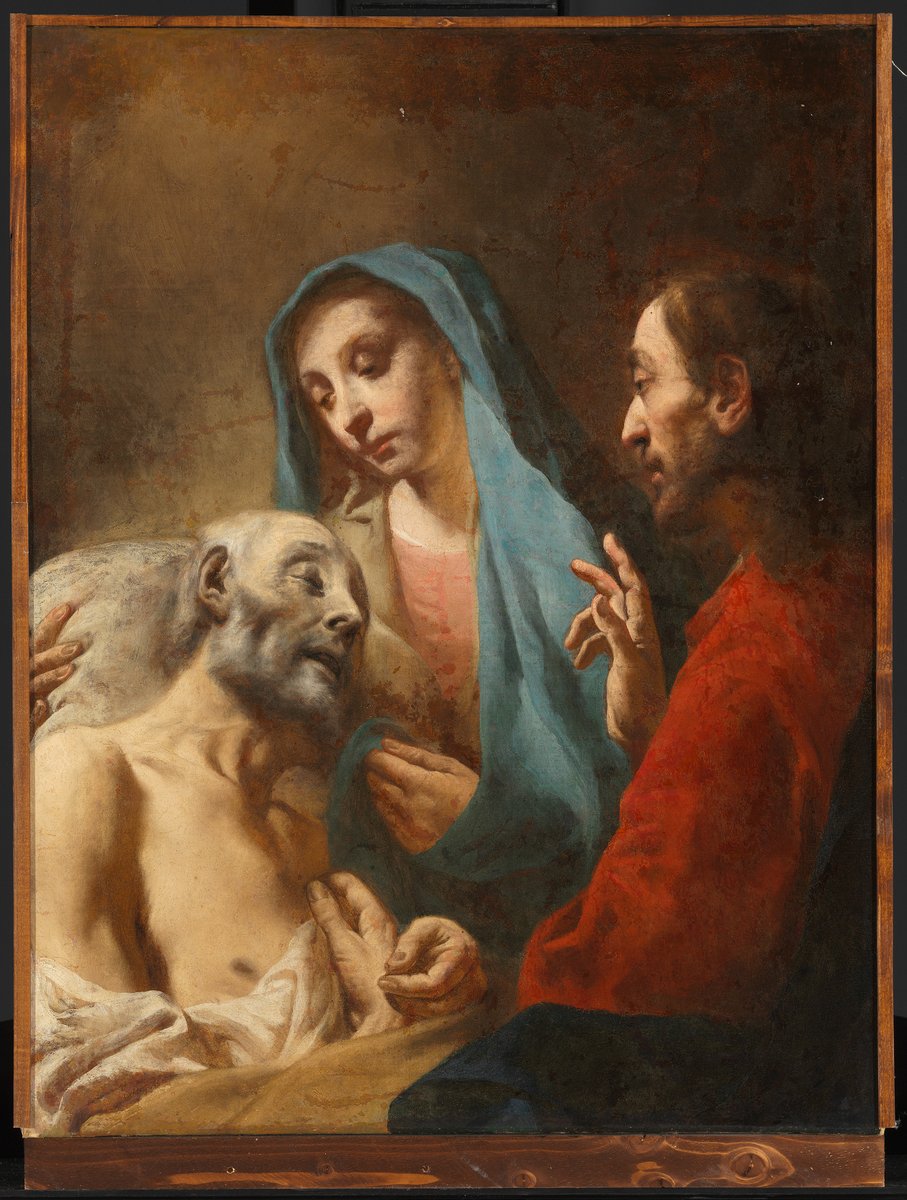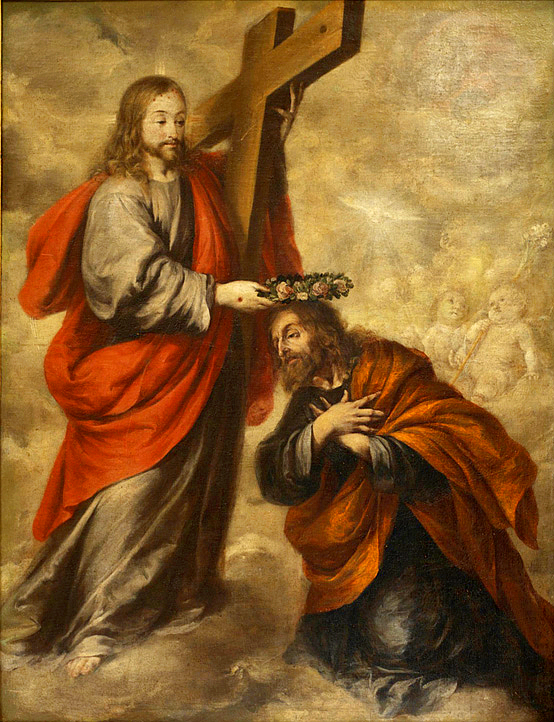Saint Joseph
Other scholars have argued that tekton could equally mean a highly skilled craftsman in wood or the more prestigious metal, perhaps running a workshop with several employees, and noted sources recording the shortage of skilled artisans at the time.[27] Geza Vermes has stated that the terms 'carpenter' and 'son of a carpenter' are used in the Jewish Talmud to signify a very learned man, and he suggests that a description of Joseph as 'naggar' (a carpenter) could indicate that he was considered wise and highly literate in the Torah.[28] At the time of Joseph, Nazareth was an obscure village in Galilee, about 65 kilometres (40 mi) from the Holy City of Jerusalem, and is barely mentioned in surviving non-Christian texts and documents.[29][30][31][32] Archaeology over most of the site is made impossible by subsequent building, but from what has been excavated and tombs in the area around the village, it is estimated that the population was at most about 400.[33] It was, however, only about 6 kilometers from the city of Sepphoris, which was destroyed and depopulated by the Romans in 4 BC, and thereafter was expensively rebuilt. Analysis of the landscape and other evidence suggest that in Joseph's lifetime Nazareth was "oriented toward" the nearby city,[34] which had an overwhelmingly Jewish population although with many signs of Hellenization,[35] and historians have speculated that Joseph and later Jesus too might have traveled daily to work on the rebuilding. Specifically the large theatre in the city has been suggested, although this has aroused much controversy over dating and other issues.[36] Other scholars see Joseph and Jesus as the general village craftsmen, working in wood, stone, and metal on a wide variety of jobs.[37

Saint Joseph
Joseph is venerated as Saint Joseph in the Catholic Church, Orthodox Church, Oriental Orthodox Church and Anglicanism. His feast day is observed by some Lutherans.[5][6] In Catholic traditions, Joseph is regarded as the patron saint of workers and is associated with various feast days. The month of March is dedicated to Saint Joseph. Pope Pius IX declared him to be both the patron and the protector of the Catholic Church, in addition to his patronages of the sick and of a happy death, due to the belief that he died in the presence of Jesus and Mary. Joseph has become patron of various dioceses and places. He is venerated with the title of Most Chaste,[7] according to the dogma of perpetual virginity of Mary.[8] A specific veneration is also tributed to the most Chaste and Pure Heart of the parents of the Lord Jesus.[9][10]
Several venerated images of Saint Joseph have been granted a decree of canonical coronation by a pontiff. Religious iconography often depicts him with lilys or spikenard. With the present-day growth of Mariology, the theological field of Josephology has also grown and since the 1950s centers for studying it have been formed

Saint Joseph
Joseph (Hebrew: יוֹסֵף, romanized: Yosef; Greek: Ἰωσήφ, romanized: Ioséph) was a 1st-century man of Nazareth who, according to the canonical Gospels, was married to Mary, the mother of Jesus, and was the legal father of Jesus.[2]
The Gospels also name some brothers of Jesus,[3] who may also have been Joseph's sons; the Gospel of James, an apocryphal work of the late 2nd century, theorized these as the sons of Joseph from an earlier marriage. This position is still held in the Orthodox churches, but the Western church holds to Jerome's argument that both Joseph and Mary must have been lifelong virgins and that the "brothers" must have been his cousins. Perspectives on Joseph as a historical figure are distinguished from a theological reading of the Gospel texts







